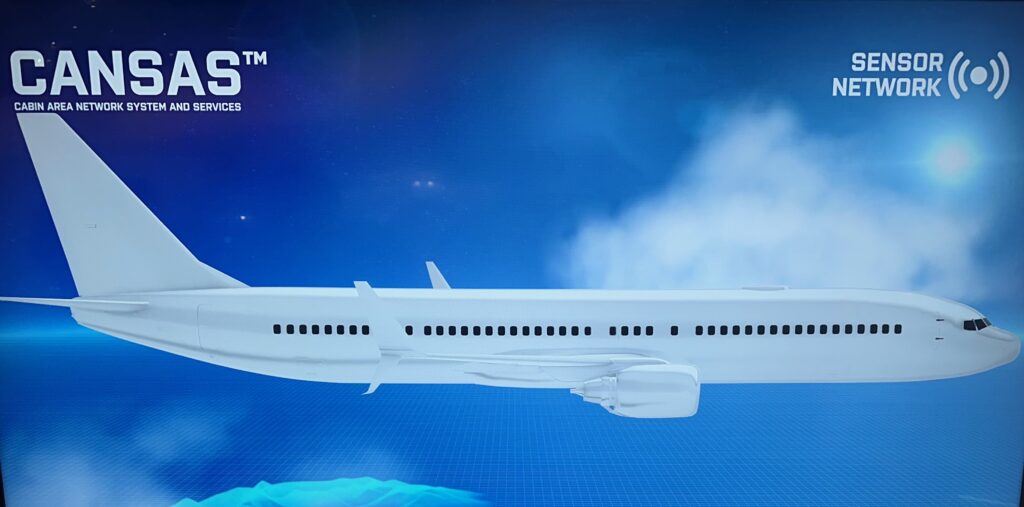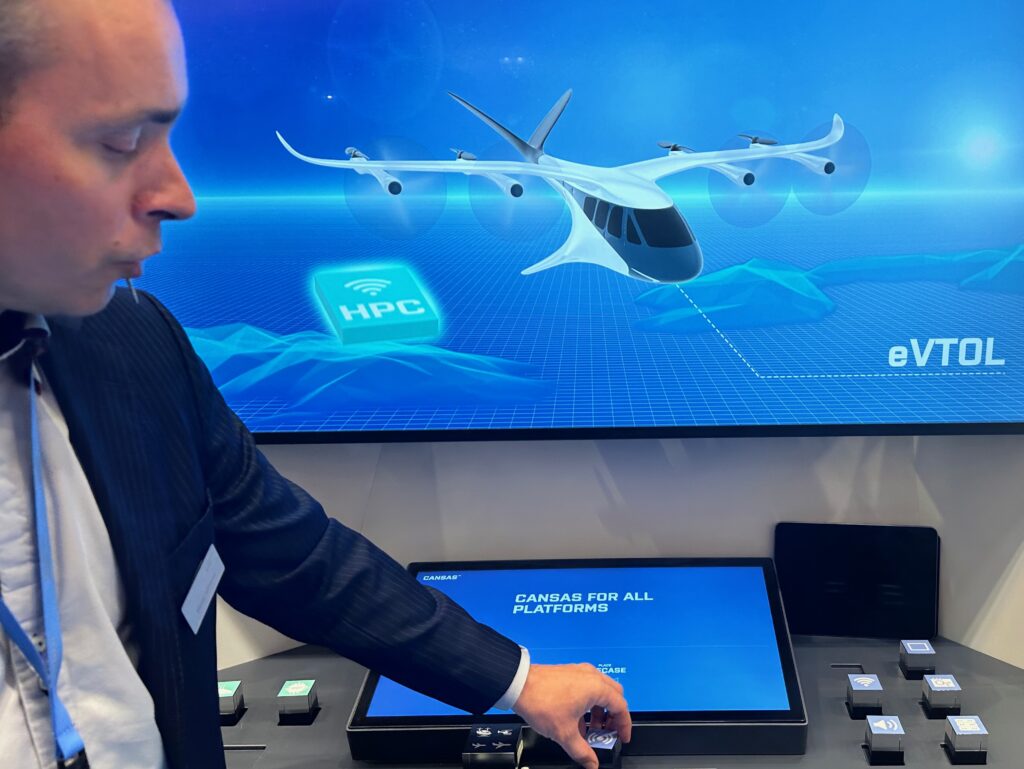Tier one aircraft interiors and avionics specialist Diehl Aviation is integrating a next-gen version of its CANSAS cabin management system with Thales’ new blade server technology. Together with well-trained artificial intelligence and a light sensor network, the integrated package is positioned to securely unlock the full potential of cabin data.
Best of both worlds
CANSAS, short for ‘cabin area network system and services’, serves as the modular, scalable baseline central control panel for nearly all aircraft functions related to the cabin, including cabin lighting, intercommunication devices, galley and lavatory controls, and cabin functions like fire protection and water waste systems. It is, for example, aboard the Embraer E-Jet E2 twinjets. But Diehl’s new CANSAS High Performance Controller (HPC) enables the system to securely manage a connected cabin ecosystem.
Thales’ Onboard Data Center (ODC), meanwhile, brings state-of-the-art hardware architecture and web technologies on board. The Crystal Cabin Award-winning server features individual blades that share storage and computing capabilities, resulting in significant additional aggregate storage space. Each blade can be replaced or upgraded depending on an airline’s needs.
“We are integrating, with our colleagues from Thales, the two worlds together, CANSAS and ODC,” Diehl technology evangelist Marcel Schmedes revealed to RGN at the Aircraft Interiors Expo in Hamburg. “This allows the ODC to use our data from the aircraft cabin and vice versa.” Thales and Diehl are longtime partners in aircraft avionics.
Effectively, CANSAS technologies can enable powerful onboard data analytics for the cabin to support operational optimizations. Such analytics optimize what Diehl has accomplished with its upgraded CANSAS solution, he confirmed. AI-powered applications sitting on the server can then improve the passenger experience — even surprise and delight them — whilst providing crew and maintenance support, and enhancing airlines’ eco-efficiency.
“Let me give you an example,” said Schmedes. “If you manage the galley, there’s so much food waste. It’s basically a nightmare when it comes to sustainability. And with our technology, we want to enable the data integration layer to provide all the data — how the goods flow into the galley and are consumed — to allow perspective and artificial intelligence or a holistic optimizer to better control the flow of food to reduce waste. So, there is this ecological optimization. This we do with our HPC, which is the hardware that you basically need for running that. And for us the highest values are transparency, openness, scalability and trust.”
In terms of passenger experience, he said, AI models can be trained “to better individualize travel experience. For example, maybe some obstacles happen on your travel; how to solve them automatically.” Working in tandem with a “very light footprint” sensor network, the system can facilitate lavatory queue management, indicate the fill level of an overhead bin or monitor air quality, among other applications.
In short, with data sovereignty secured through the CANSAS HPC data integration layer, well-trained AI applications can provide “better optimizations”, said the Diehl executive. The CANSAS High Performance Controller is available now, with lead times of 12 to 18 months.
 Meanwhile, a broader movement is in fact afoot in industry to ensure data is robust and AI is well trained to support the cabins of the future. Diehl and Thales — together with Airbus, Adient Aerospace, Boeing, Jeppesen, Safran and other stakeholders — are participating in a research project that ultimately aims to revolutionize the way cabin data is collected, analyzed, and used.
Meanwhile, a broader movement is in fact afoot in industry to ensure data is robust and AI is well trained to support the cabins of the future. Diehl and Thales — together with Airbus, Adient Aerospace, Boeing, Jeppesen, Safran and other stakeholders — are participating in a research project that ultimately aims to revolutionize the way cabin data is collected, analyzed, and used.
Called the i+s Cabin research project, the group has already developed a unified communication standard for cabin components. Without trusted data “you really can’t do anything, not even simple applications, let alone complex AI applications where you have to train the system and teach a network,” noted Schmedes.
Supporting eVTOLs and UAMs
Outside of the commercial aviation applications for CANSAS, HPC and the Thales ODC blade server, Diehl’s HPC technology is poised to play an interesting role as, effectively, a connectivity unit for unmanned aerial vehicles and eVTOLs, where Diehl already boasts key cabin partnerships, under its ‘CANSAS for all platforms’ strategy.
German ATG specialist SkyFive is, for example, integrating its A2G-branded air-to-ground connectivity technology with the HPC, yielding what it says is “the lightest-ever broadband solution for weight-constrained aircraft”.
“This is the connectivity target for eVTOL applications, regional jets, rotary platforms and we can even support highly critical missions like firefighting, rescue missions, medical,” he said. But the work goes behind providing high bandwidth communications for the passenger, with Schmedes citing “mission critical links, so air traffic management and flight management.”
Data security for eVTOLs and UAMs is “absolutely mandatory”, he stated.
 Asked if HPC can keep non-safety data separate from safety data, he said: “I think this makes our unit quite unique because we have an isolated place in it for safety applications, even if we are connected on the other side to the open world. So, we can connect to the avionics and get the data to the system, but we also can connect to the ground and transport the data.” This ensures both security and safety, he added.
Asked if HPC can keep non-safety data separate from safety data, he said: “I think this makes our unit quite unique because we have an isolated place in it for safety applications, even if we are connected on the other side to the open world. So, we can connect to the avionics and get the data to the system, but we also can connect to the ground and transport the data.” This ensures both security and safety, he added.
Related Articles:
- Thales takes IFE innovation to the edge with edge-caching and the cloud
- Diehl delves into key cabin trends as aviation rebounds
- Collins makes Cabin IoT play with connected galley field trials
- SkyFive advances A2G connectivity projects in EMEA, elsewhere
- Covarians seeks to improve cabin environment through actionable data
- Diehl dives into data exchange standards with CANSAS cabin platform
- Press Release: Diehl chooses Axinom onboard cloud for nextgen IoT
Featured image credited to Mary Kirby













